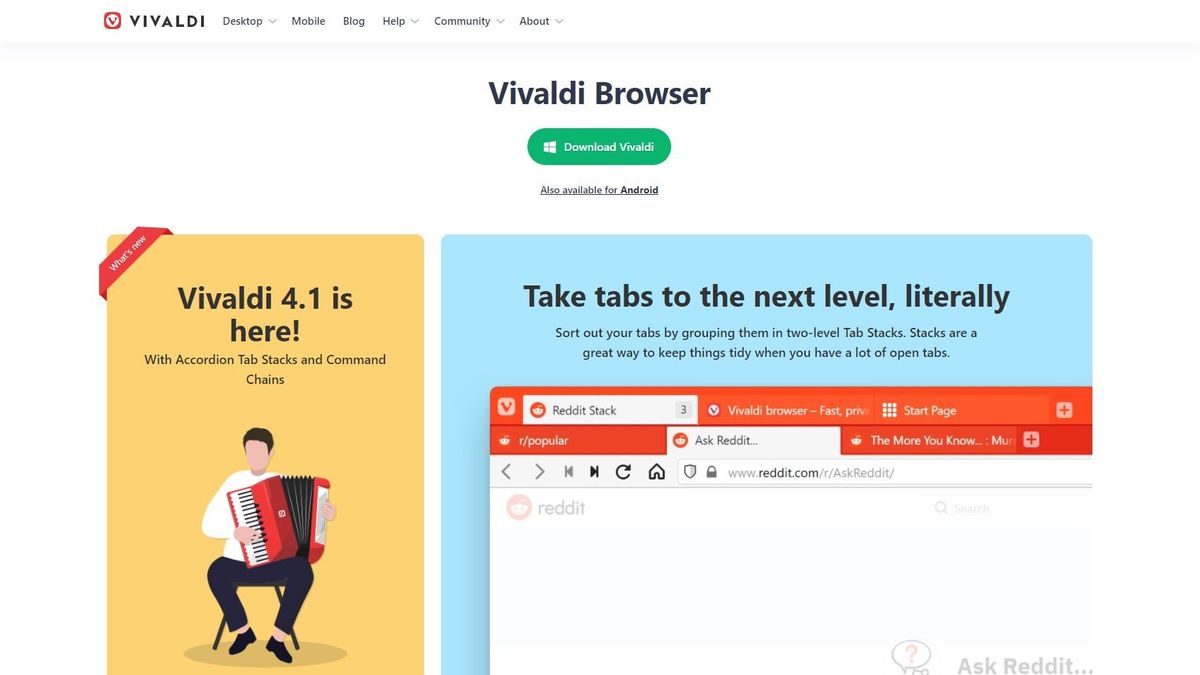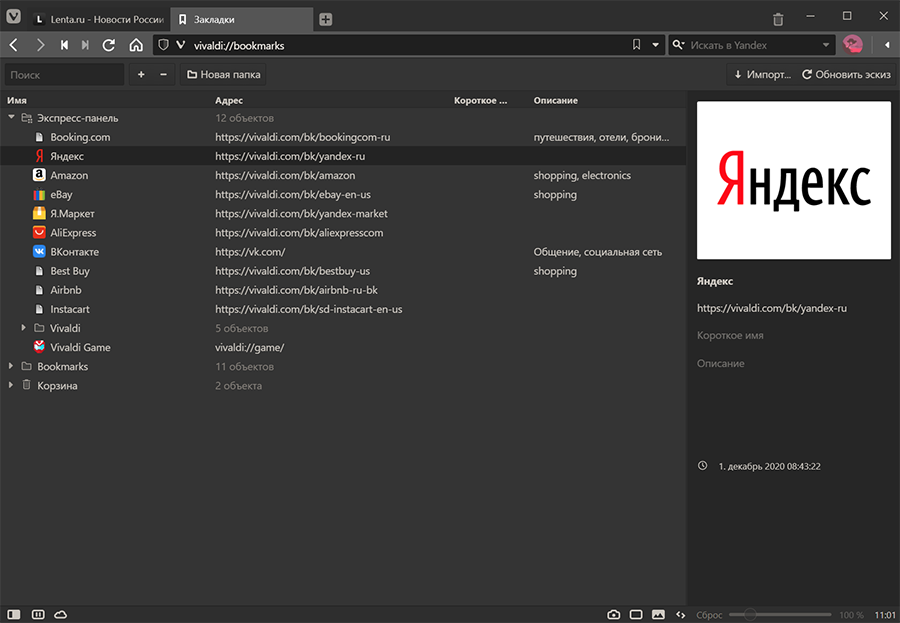
Vivaldi is a relatively new browser launched in 2016 that was co-founded by a former CEO of Opera Software, so its features are similar to pre-Chromium Opera, though it also uses Chromium as its base.
#Vivaldi ios full#
At the bottom of the “Easy setup” menu, click “Go to full browser settings”.Click the three-line “Easy setup” menu button in the top right corner.Opera is another browser that has moved over to Chromium, but the options and settings are a little different from the others I’ve described above. You’d think Brave, the browser that was founded by the guy who invented JavaScript would correct that – but apparently not. Select the option “Don’t allow sites to use Javascript”įor some reason, all these Chromium browsers spell “JavaScript” wrong in this area of the settings, using the casing “Javascript”.Scroll down to the “Content” section and click “JavaScript”.Click “Security and Privacy” on the left-side menu.Click the hamburger (three-line) menu in the top right corner.In Brave you can likewise do a search for the JavaScript setting, or follow these steps: Disable JavaScript in Brave Browserīrave is another Chromium-based browser that’s gained popularity over the last few years because of its privacy features and Brave Rewards program. Turn off the “Allowed (recommended)” toggleįrom there, similar to other browsers, you can even enable or disable JavaScript on a per-site basis if necessary.Scroll down a little to the “All permissions” section.Select “Cookies and site permissions” on the left-side menu.Click the three-dots menu icon in the top right corner.You can do a search for the keyword on the settings page, or follow these steps:

The Edge browser is now built on Chromium, so you’ll find this is similar to disabling JavaScript in Chrome. You can also filter it down even more by typing “javascript.enabled” but it’s basically the same thing, it just shows you other JavaScript-related preferences. One of the preferences will be “javascript.enabled” double click this line.In the “Search preference name” field, type “JavaScript”.If necessary, on the “Proceed with Caution” page, click “Accept the Risk and Continue”.In the browser address bar (where you type URLs), type “about:config”.But typing “JavaScript” into that search field doesn’t bring up anything.ĭisabling JavaScript in Firefox is done as follows: If you go into the settings page via the “Tools” menu, you’ll see a search option. Disable JavaScript in Firefoxįirefox has a completely different way of doing this.

The search will indicate that you should click on the “Site settings” option and then from there the “JavaScript” feature will be highlighted. Choose the option “Don’t allow sites to use JavaScript”Īs mentioned, it’s not always easy to remember exactly where this is so if you forget, just type “JavaScript” in the “Search settings” box at the top when the settings page first appears.Scroll to the bottom to the “Content” section and click “JavaScript”.On the left-side menu click “Privacy and security”.Click the three dots menu in the top right corner.In Google Chrome, I’m sure this setting has changed places a few times over the years, but you can always do a quick keyword search to find it.
#Vivaldi ios how to#
So here’s a list (that I’ll keep updated) showing you how to disable JavaScript in different browsers on desktop and mobile. Sometimes it’s to test a page I’m working on, but in other instances it’s simply to visit a web page that’s not functioning correctly and I want to see if JavaScript is the culprit. I still find myself wanting disabling JavaScript on pages I visit. Developing in this way used to be a cornerstone of Progressive Enhancement and can be handy on both desktop or mobile. In 2022 I think it’s still important as a web developer to test your how your websites look and function when users disable JavaScript in their browser.


 0 kommentar(er)
0 kommentar(er)
